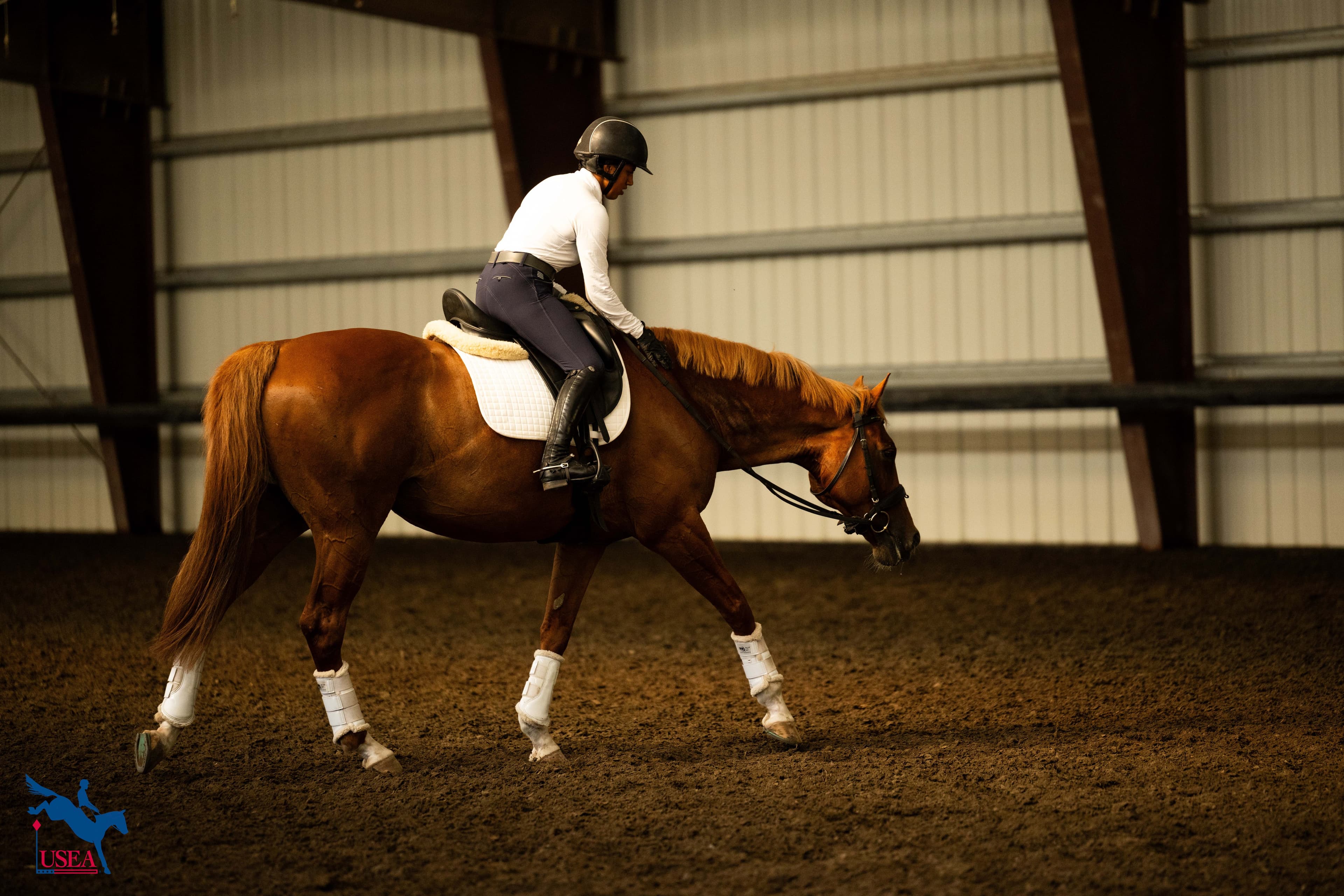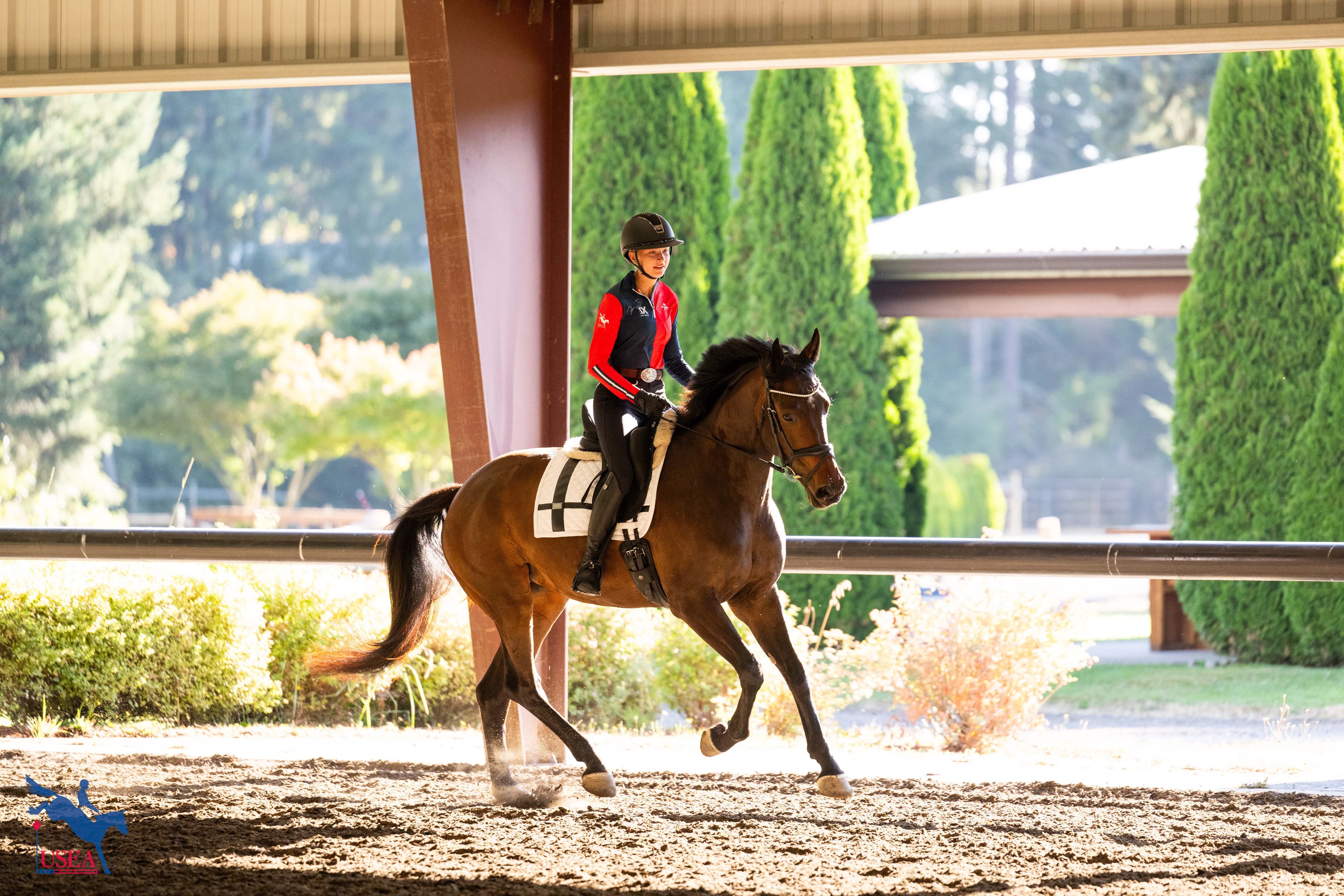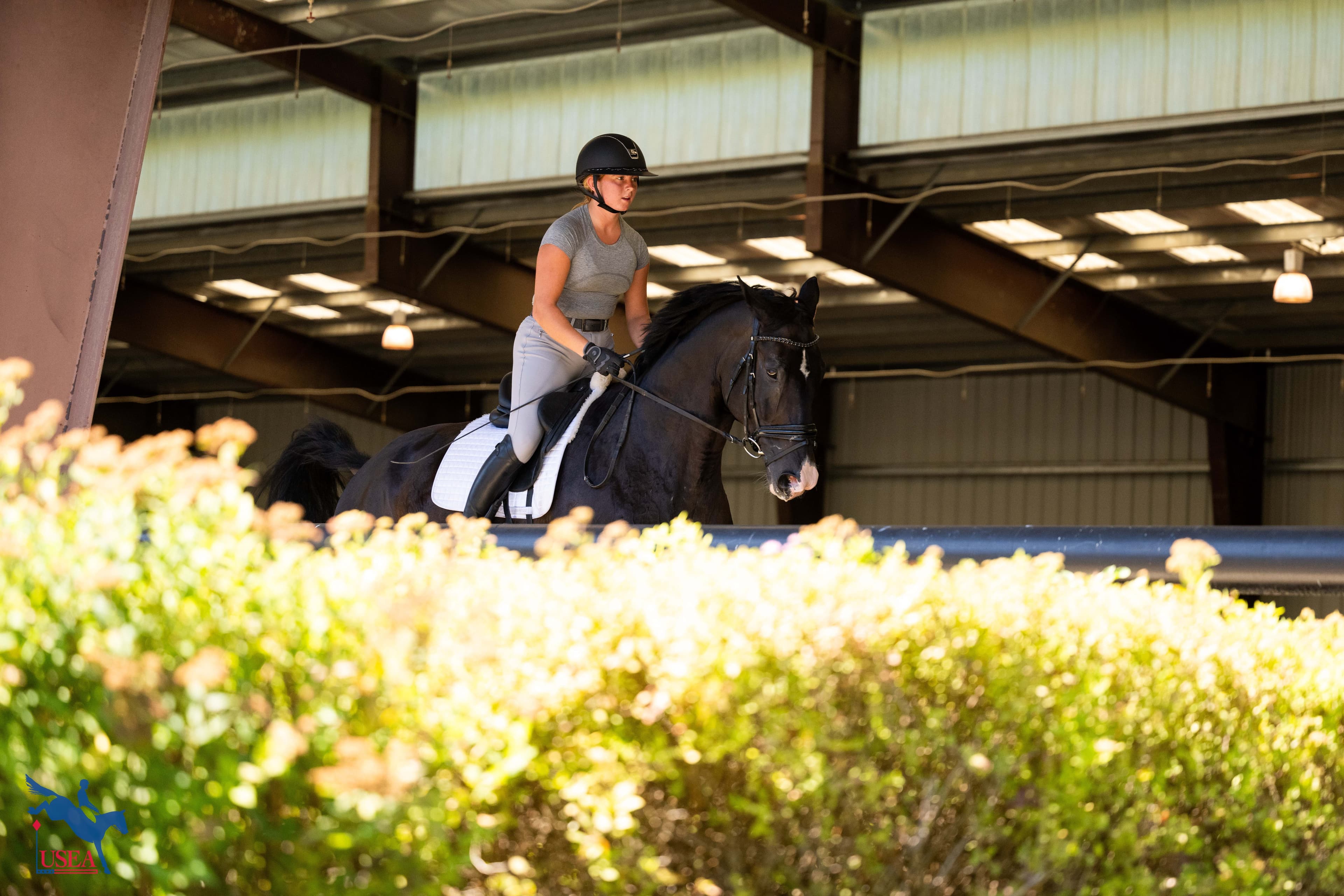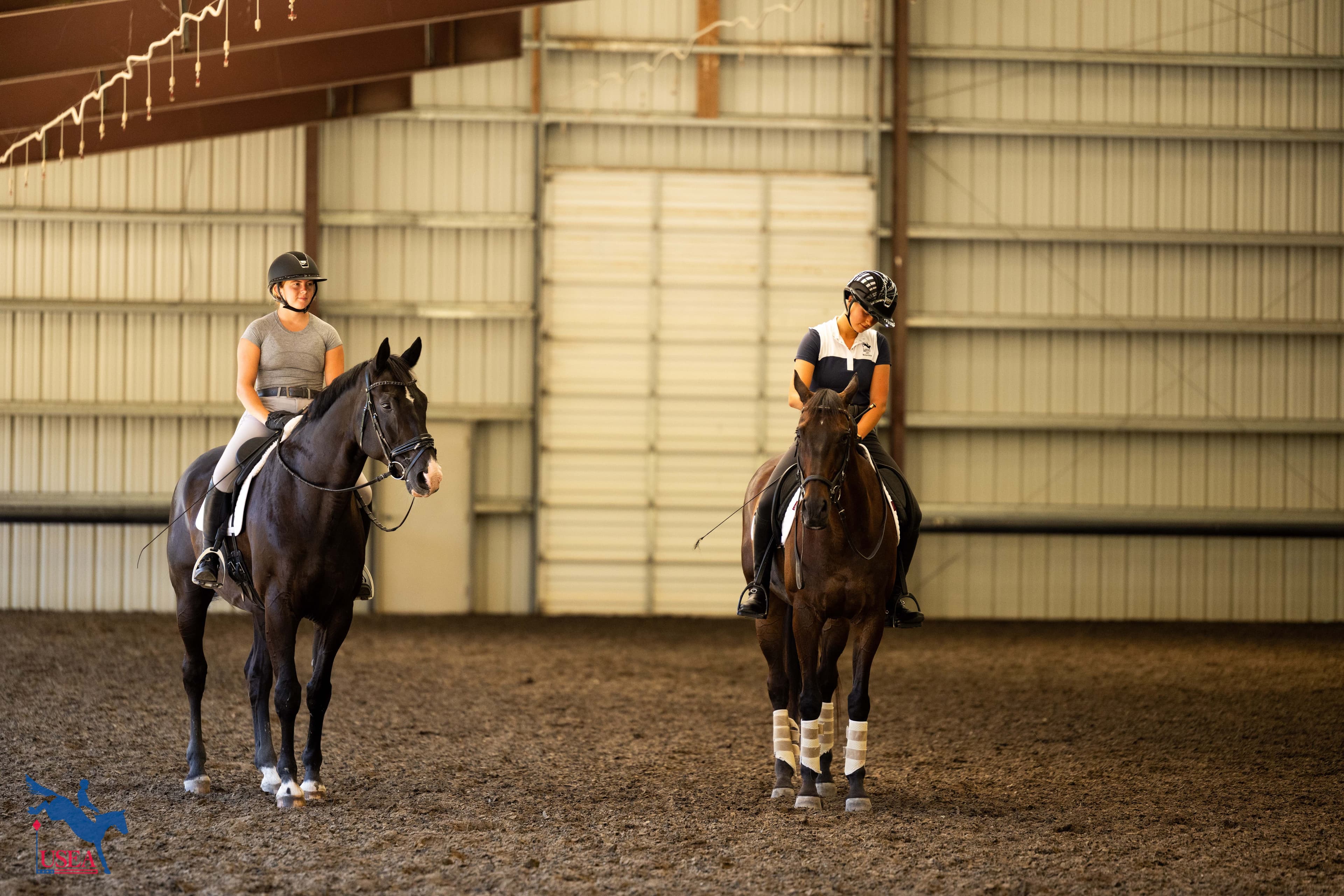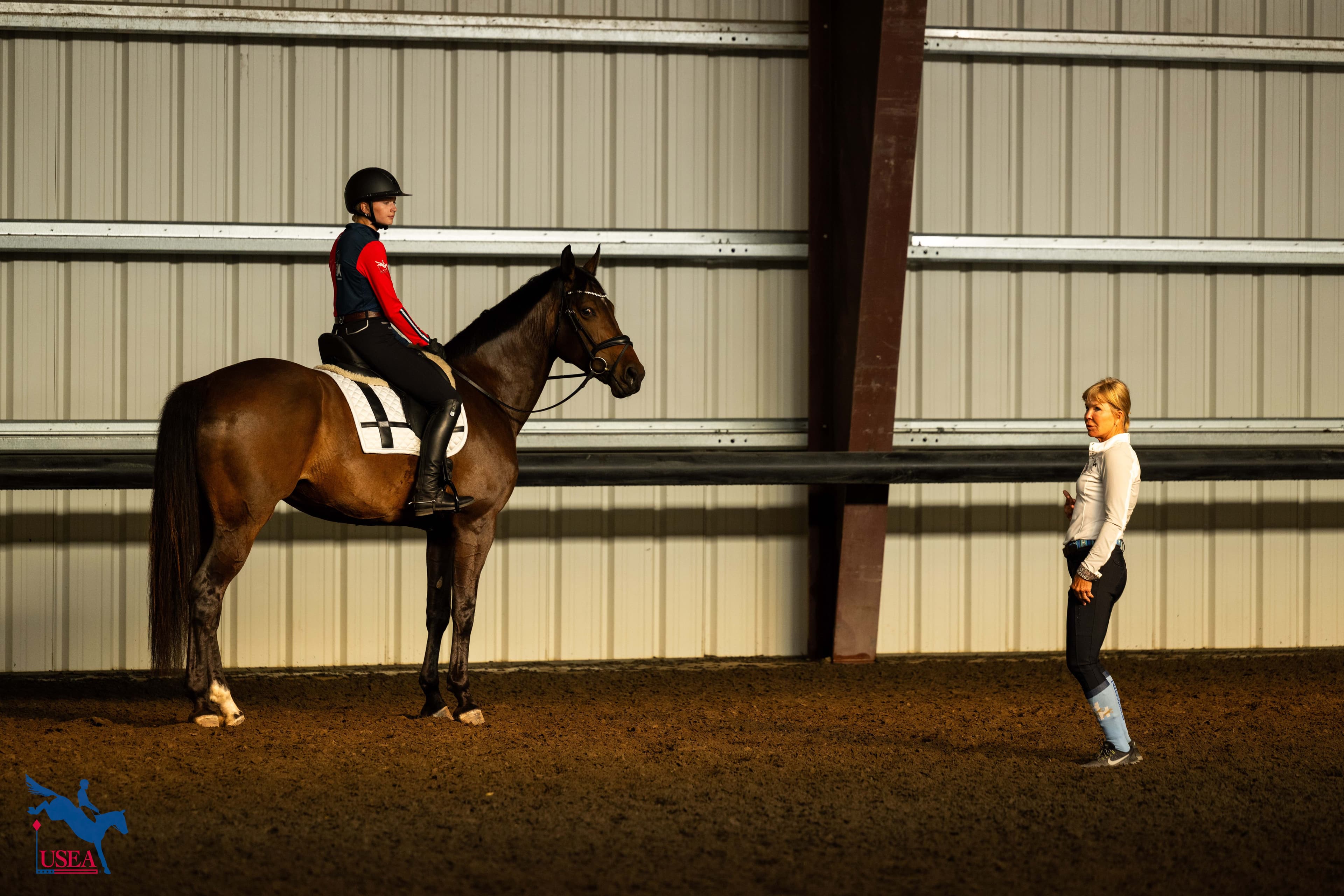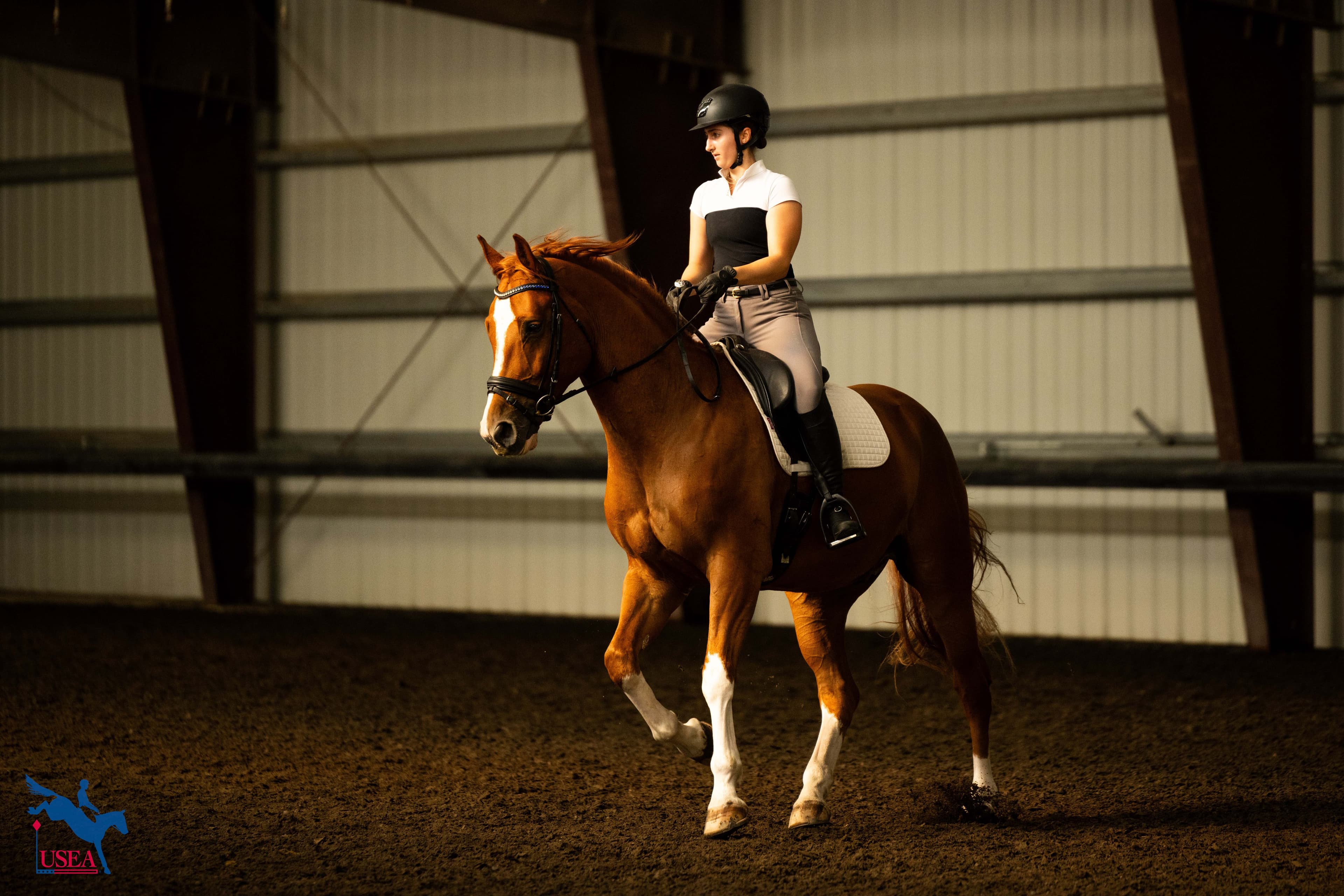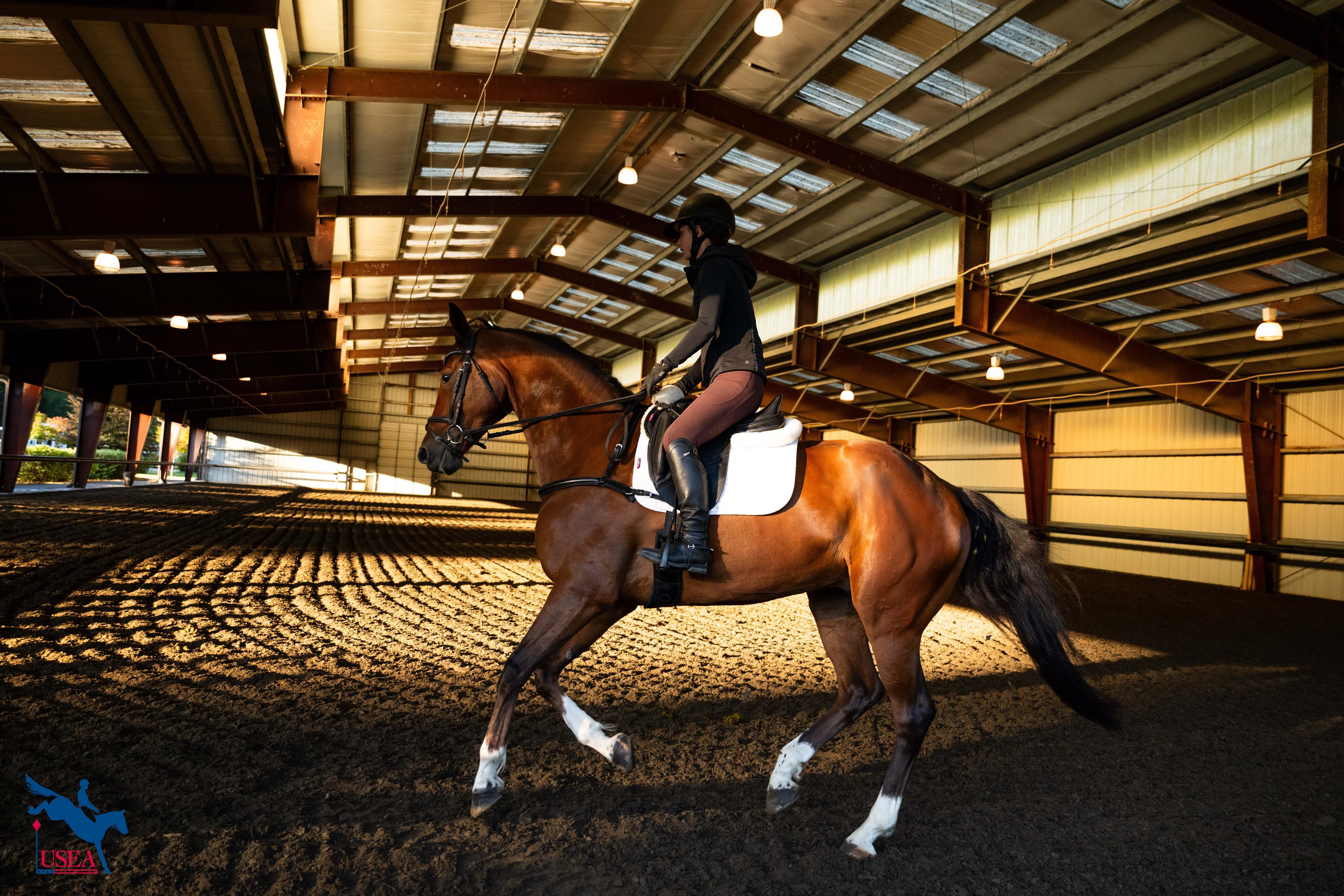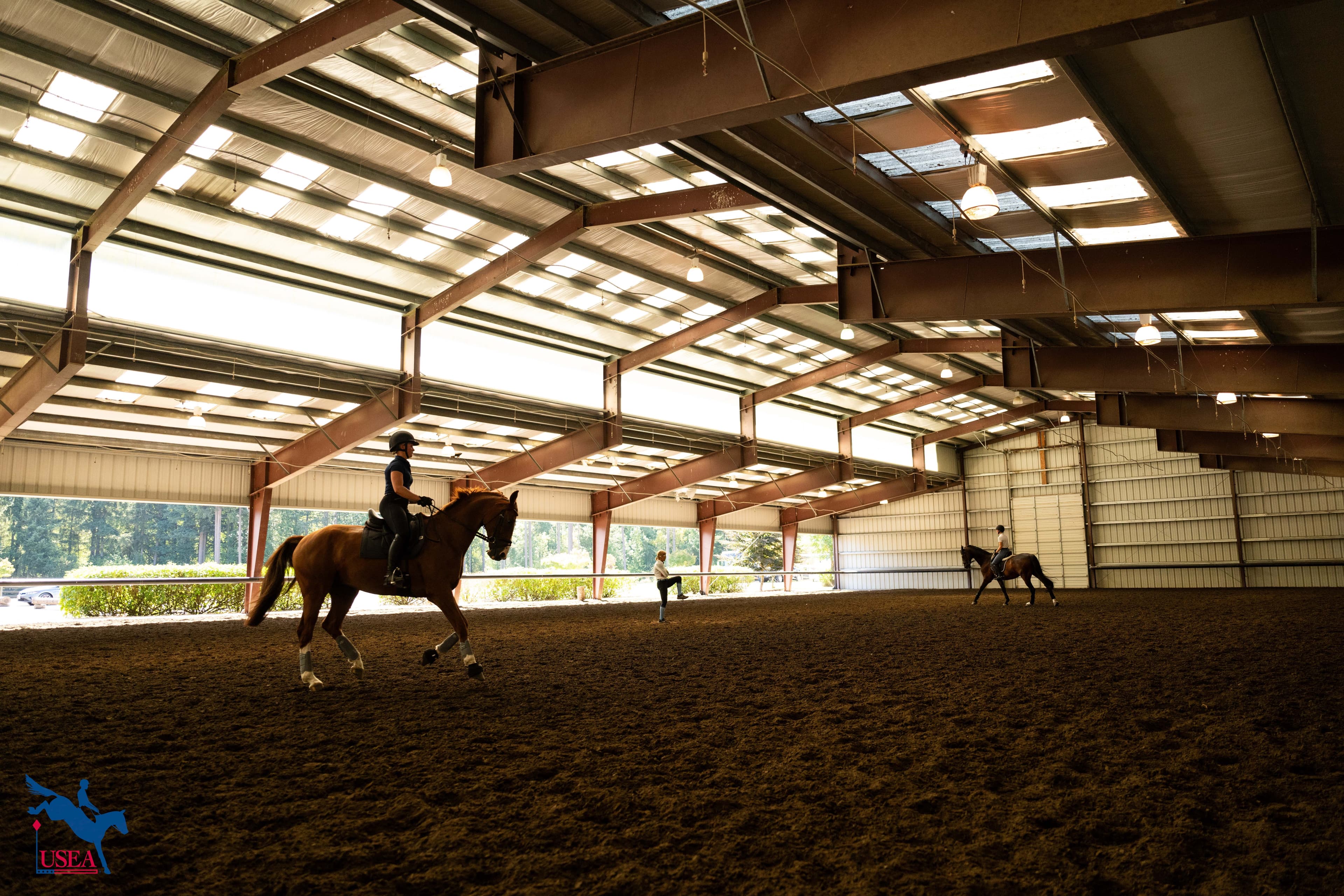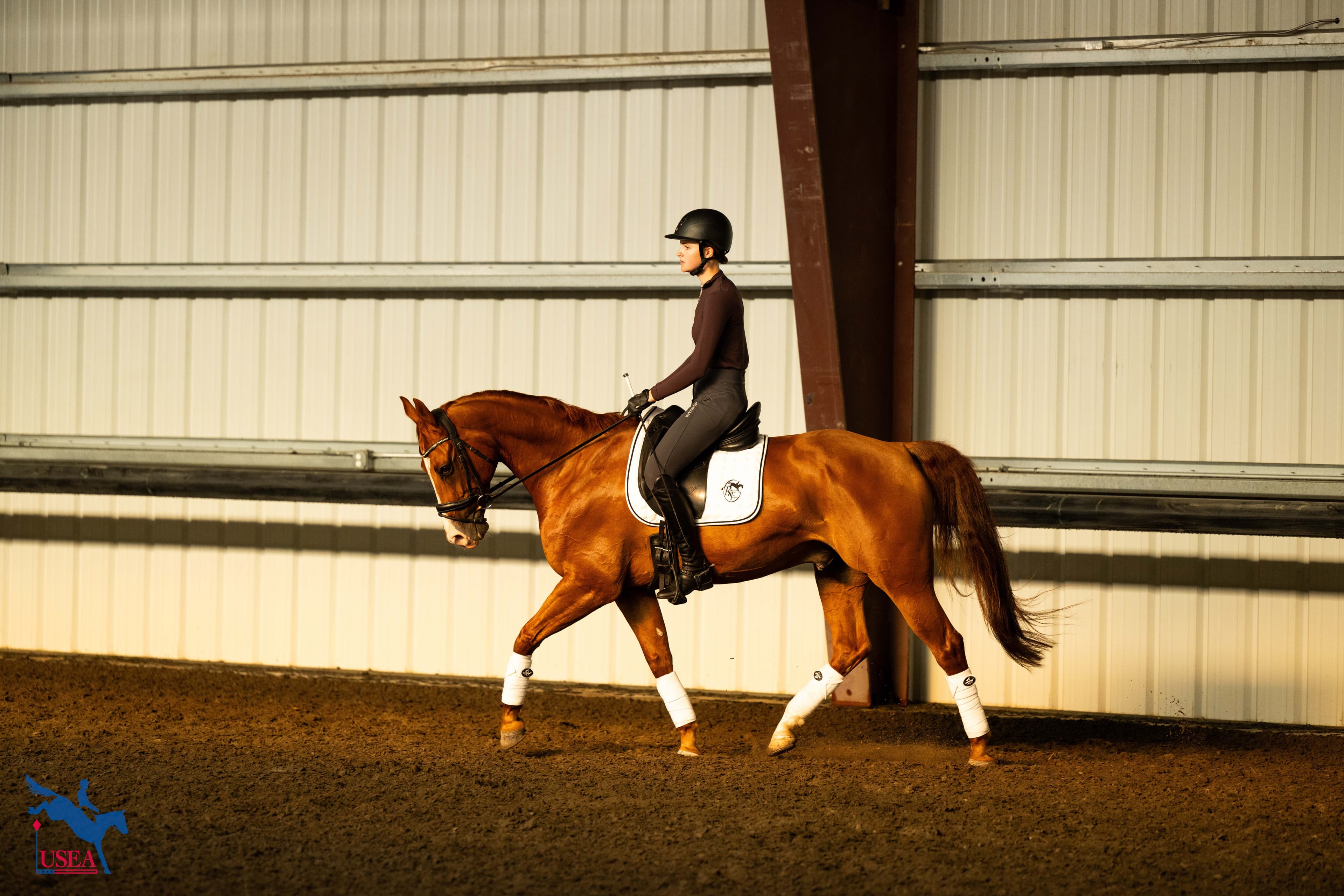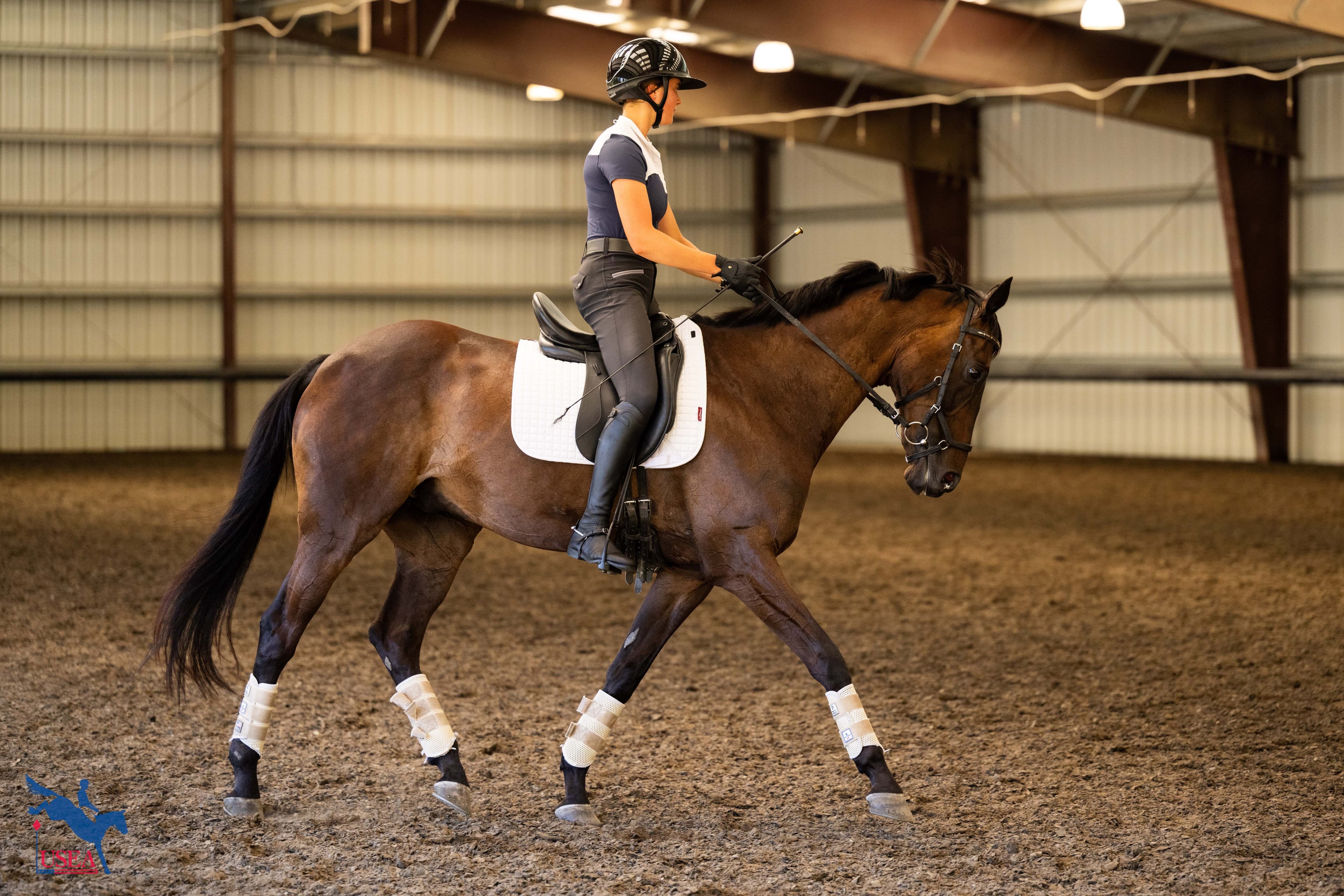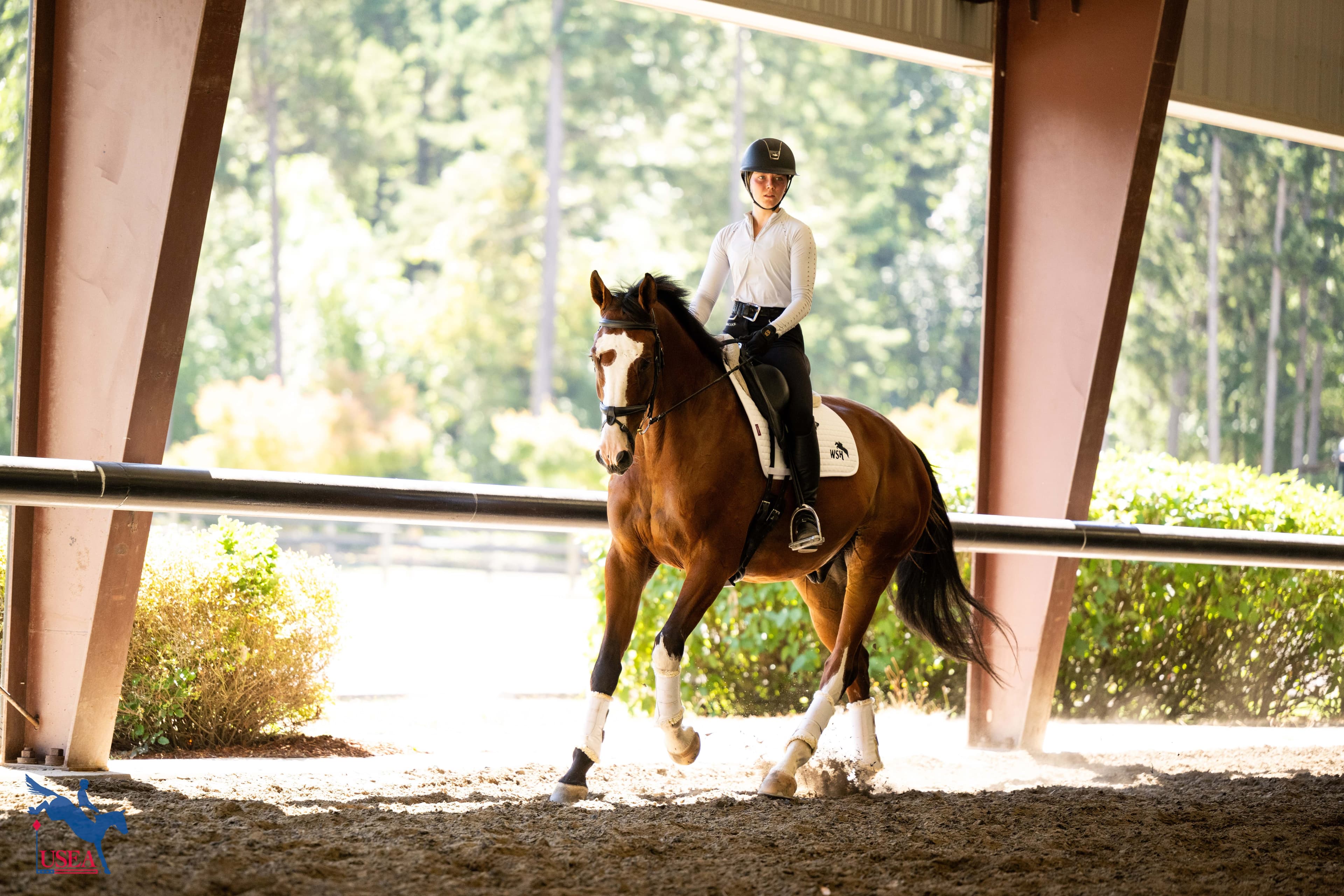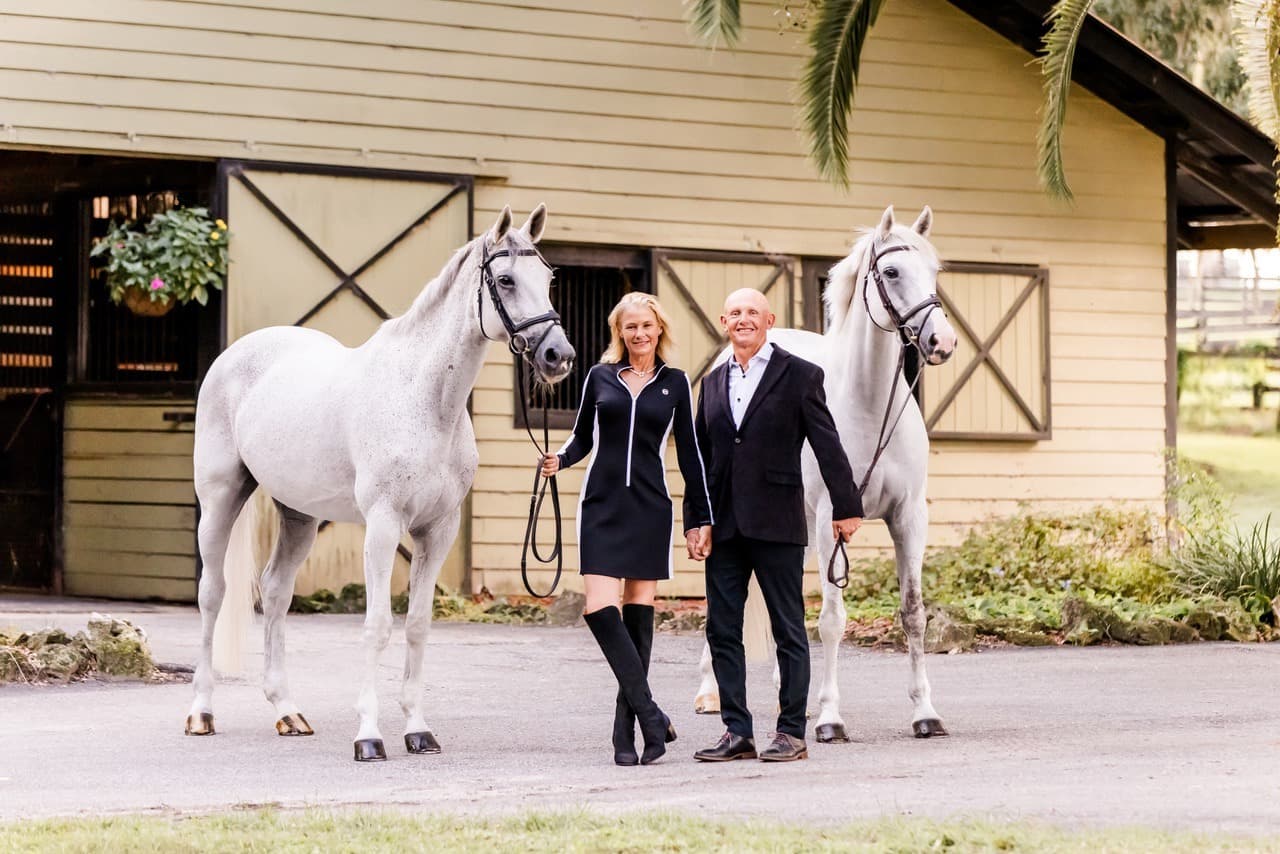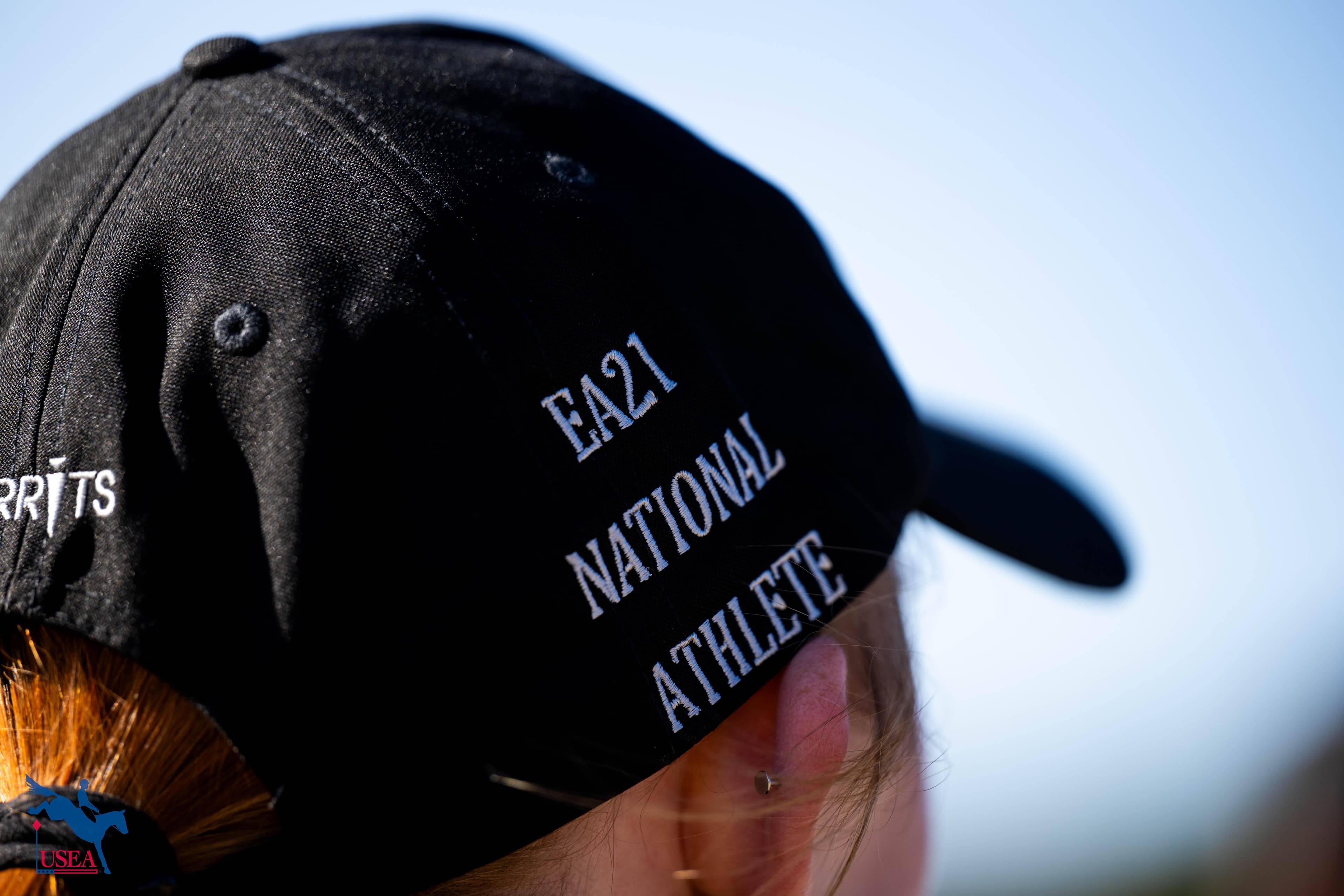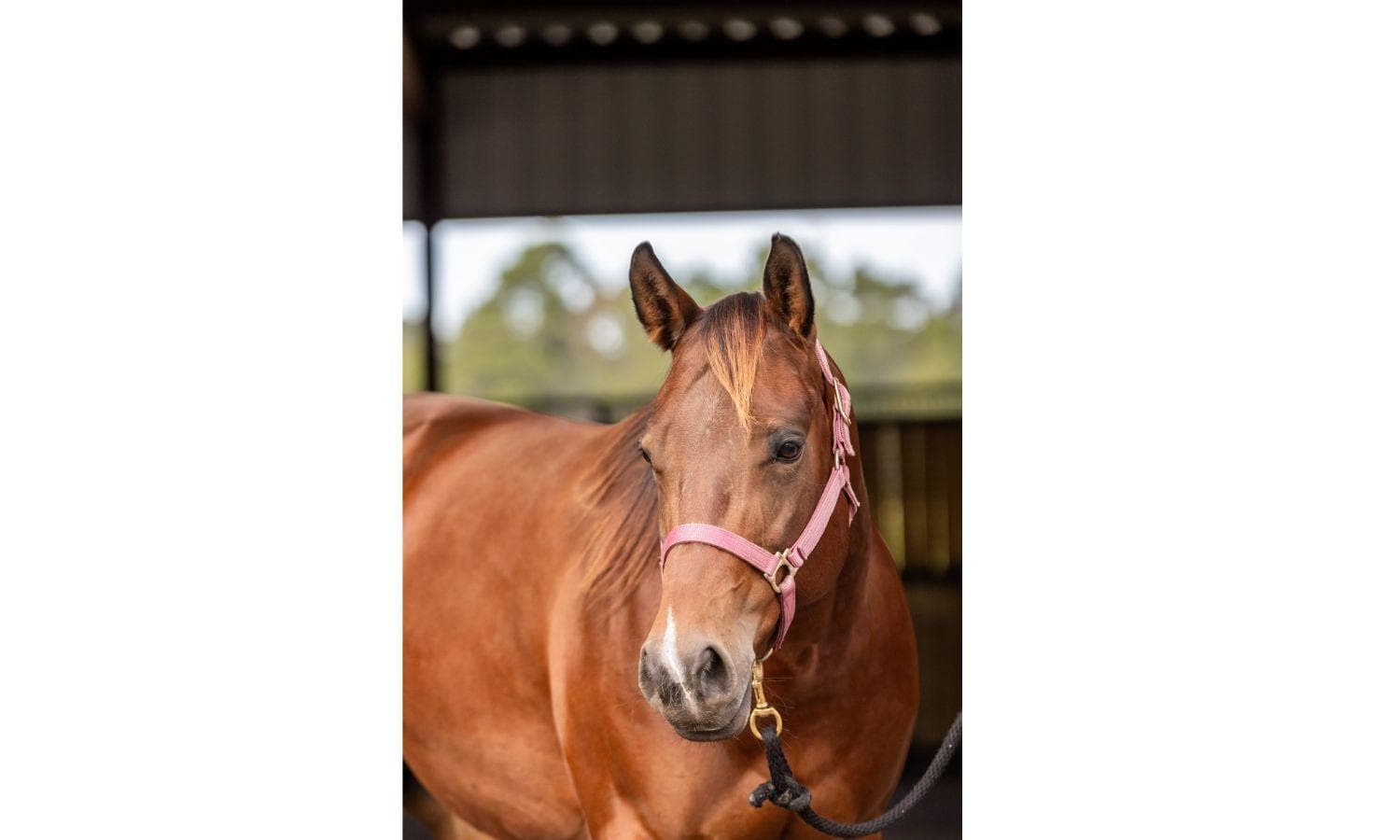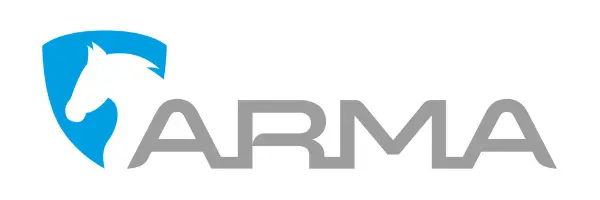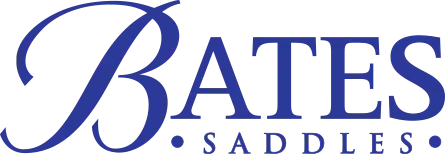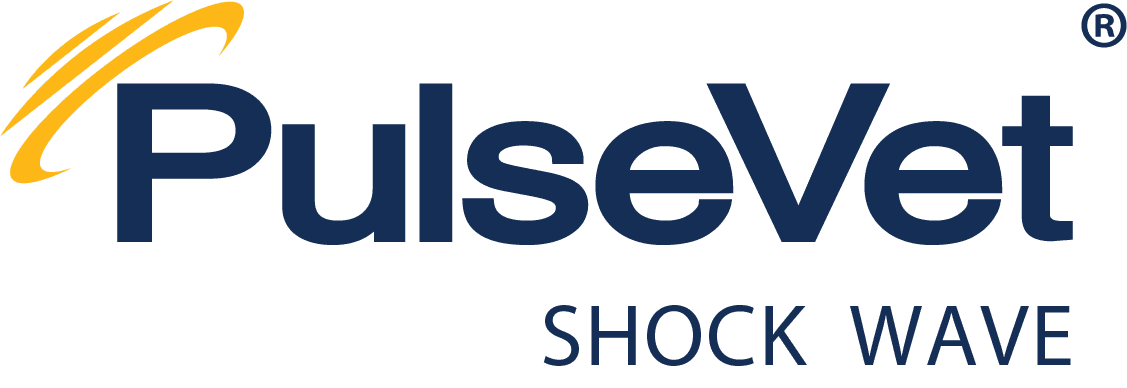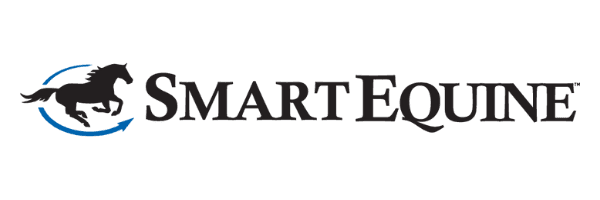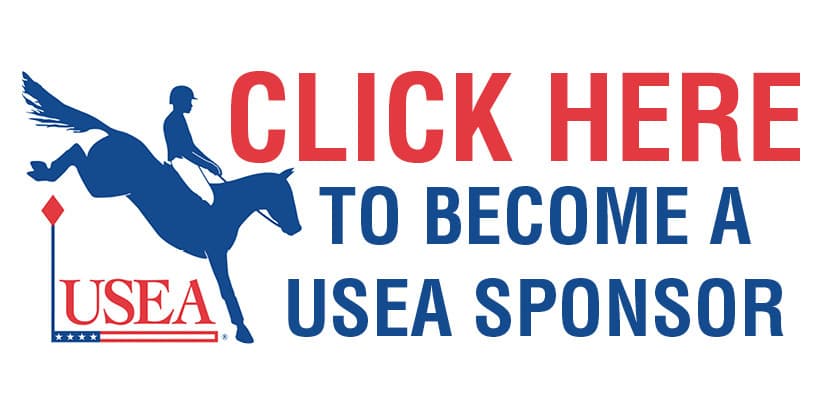Let Learning Be Messy at Day 1 of the EA21 West II Clinic
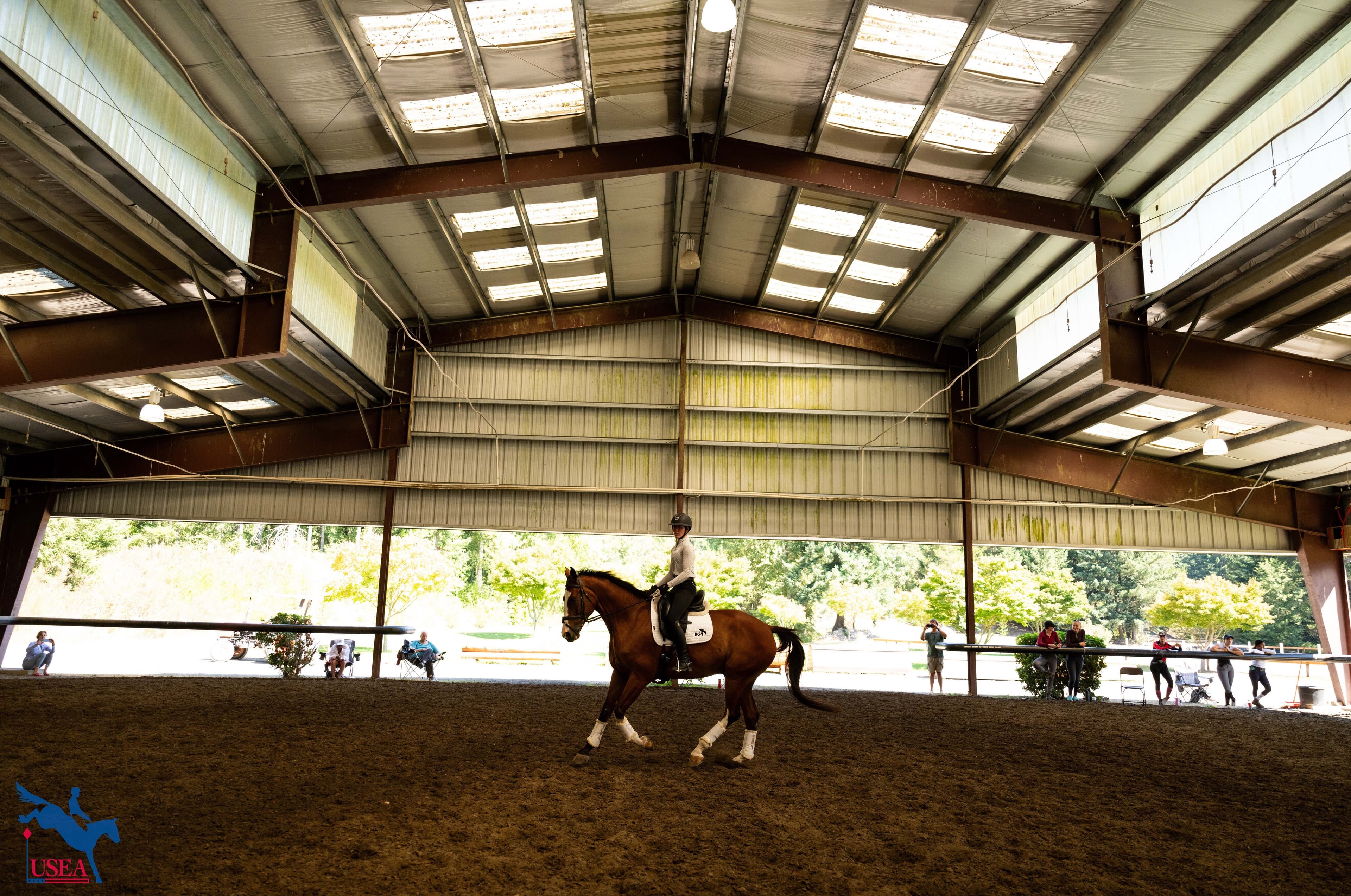
Yelm, Wash.—Aug. 12—“Learning is messy; embrace the mess. That’s the only way to get better,” said Jan Byyny, new coach of the EA21 West II Clinic held at Aspen Farms. “The people who win are the ones who can fix the mess the quickest.”
Twelve athletes had the opportunity to enter the EA21 curriculum this week, set forth by EA21 Director of Coaching, David O’Connor. Byyny whole heartedly believes in O’Connor’s system.
“I didn’t know how to ride; I knew how to compete,” she said. “David’s system really helped me.”
Starting as always with the German Training Scale, the athletes—approximately 75% of who are pursing or preparing to pursue a secondary degree in STEM fields—explained the different levels of the pyramid to Byyny. Many of them are repeat participants, and it’s clear that the goal of the program—to provide consistent quality instruction, has done its job with even the new athletes articulating clearly the different concepts.
Once the definitions of rhythm, suppleness, connection, impulsion, straightness, and collection were confirmed, Byyny had the participants do a “stick horse” ride. Imitating the gaits on the ground, she illustrated how much a horse’s hips have to be active and how the different size steps need different positions of the hind end.
“We cantered on our feet and trotted on our feet during our discussion, which I've never had a coach do that. It was really fun!” Madyson Hsue said with a laugh. “I am a big believer in being a student with the sport. it's always fun to ride with somebody else, and [ask] am I right in thinking that I should do this, or is there a different way that I should approach this?”
Byyny’s approach to imitating the hip position on the ground translated directly into the theme of the dressage riding portion of the clinic: how the riders’ hip position needs to change to create different size of step and engagement.

The arc of the lesson was the same: in pairs, riders were invited to warm their horses up in front of Byyny and the other participants who then were asked to give exercises that would improve the horses. Riders were also asked to explain what they were feeling underneath them. After completing exercises set by the participants alongside individual instruction from Byyny, riders swapped mounts, learning how to catch ride and how to decide what detail to focus on during the ride. She encouraged them to let the ride not go perfectly and to let the learning be messy if it needed to be.
“Every time I come here, it makes me super excited to keep learning,” Lindsay Essex remarked. This is her third year attending the EA21 program. “One of the main [tools I learned today was] rotating my pelvis into a position that makes it easier for the horse to correct their own balance and sit up in the front end; to really bring their hind end under them.”
She and Hsue were the first pair of the day, and Byyny straight away showed them the difference in a seat that goes up and down versus a seat that goes backward and forward in creating engagement and impulsion. Up and down helps the activity and impulsion of the hind end, making it easier for a horse to sit down and properly push from the hind end. Backward and forward helps the size of the horse’s step go bigger, encouraging a connection along the topline and forward-thinking gait.
For Sophia Greenwood, based in Utah and attending her first EA21 program, it was an exciting moment of unlocking a new skill. “There was so much that we learned! Something I've been struggling with and trying to improve is the canter work. Loosening my hips to make it so that she can come up and over herself and use herself better; it made her have a steadier rhythm, which is going back to the training scale. Getting that basis is the main thing, and it'll just build from there.”
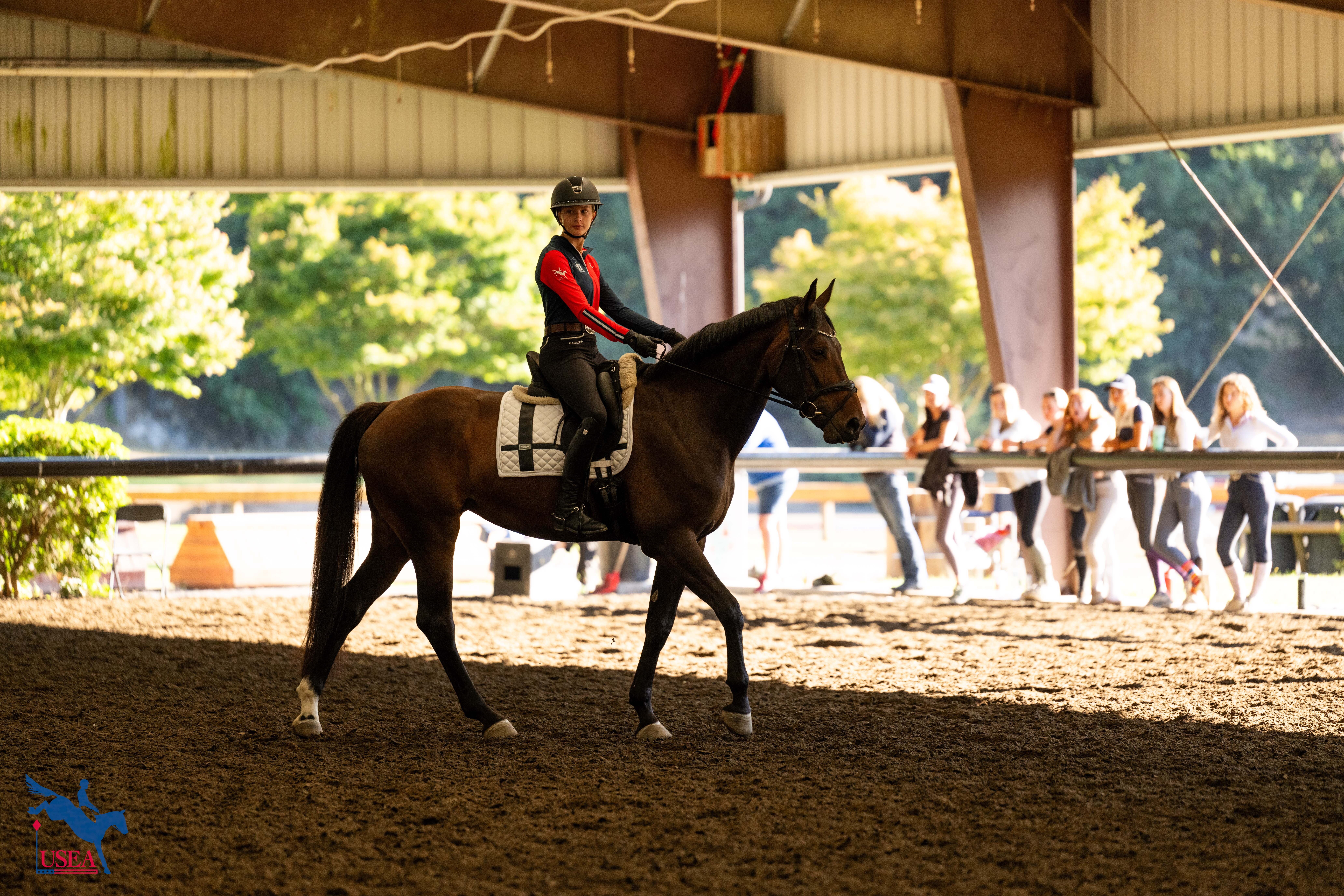
Despite the similar curriculum every year, it is never boring. In fact, in having the same concepts explored, a new practice of mental strength and emotional control can be unlocked. Kendal Smith is attending her third year and has learned to manage her nerves. “The biggest thing I've been able to work on is just not panicking immediately,” she said. “Not thinking it has to be good right now, and just let the [horse’s] head be where it's going to be, and just work on engagement. Like what we were saying [with] the training pyramid; just one step at a time, and we're not going to immediately have everything. Every year, I've been able to absorb just more and more, get used to letting the nerves go, and being here to listen and learn.”
Riders have set off to design their show jumping course for the final day of the final EA21 regional clinic of the year and learn horse and stable management from Byyny. Riding resumes Wednesday at 7:00 a.m. PST.
West II | Aspen Farms | Yelm, Washington
The Participants:
- Reese Blinks
- Shruti Bona
- Simone Clark
- Lindsay Essex
- Sophia Greenwood
- Madyson Hsue
- Alexis Johnson
- Coco Ramkowsky
- Brianna Rasmussen
- Caterina Ritson
- Kendal Smith
- Hanni Sreenan
About the USEA Emerging Athlete U21 Program (EA21)
The purpose of the USEA Emerging Athletes U21 Program (EA21) is to identify and provide consistent quality instruction to the next generation of elite event riders. The aim is to create a pipeline for potential team riders by identifying and developing young talent, improving horsemanship and riding skills, and training and improving skills and consistency.
The USEA Emerging Athletes U21 Program was launched in 2022 with a model of five summertime regional clinics taught by carefully selected USEA Eventing Coaches Program (ECP) coaches, leading to a winter national camp consisting of selected Young Riders from the regional clinics. Athletes who are 21 years or younger, are current members of their USEA Young Rider Area program, and are established at the Training Level or higher, are eligible to apply for the EA21 program. Click here to learn more about the USEA EA21 Program.
The USEA would like to thank ARMA, Bates Saddles, Horse Illustrated, Kerrits, PulseVet, Ride iQ, Schneiders Saddlery, Sidelines Magazine, WeRideTogether, and YETI for sponsoring the USEA Emerging Athletes U21 Program.
